Posted May 09, 2019
If the flow of qi becomes obstructed, then the body cannot perform the Five Cardinal Functions, and as a result, an illness may occur.
For example, if there is a qi deficiency, then issues like fatigue, lowered immunity, poor digestion, and breathing problems may ensue. Similarly, an excess of qi can result also in illness, such as stress, insomnia, and dry mouth.
Jing: Jing, which translates into “essence” is the substance that is responsible for both the essential immaterial (soul) and essential physical being (body) of a person. It is yin nature and is stored in the kidneys. It is considered to be the densest physical matter within the body and circulates through the Eight Major Vessels, where it helps to create semen, menstrual blood, and bone marrow.
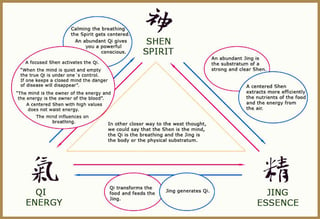
This chart shows the connection between Qi, Jing, and Shen.
Jing regulates the body's growth and development and works with qi to help protect the body from harmful external factors.
Jing and qi have a close relationship. Together, are believed to form the foundation for shen, or spirit.
Shen: Shen is the yang portion of qi. It is often translated as “spirit” and is responsible for regulating emotions. Shen is stored in the heart and enters a rested state while sleeping. It is nourished by xue and is stored in the blood vessels. Symptoms of imbalance may include mental illnesses, such as anxiety and extreme depression, but also insomnia. The short video below does a great job of further explaining this concept:
Three Treasures: Qi, Jing, and Shen are referred to as The Three Treasures. Together, they form the foundation for understanding the human body and the healing practices of Traditional Chinese Medicine, such as acupuncture, tui na, and herbology.
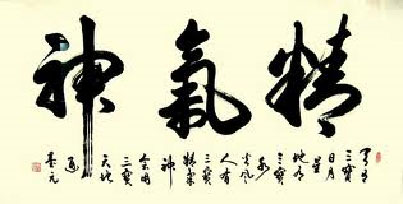
Caligraphy of the Three Treasures
However, the other two fundamental substances are still important and should be thought of as subsets or particular manifestations of The Three Treasures, rather than completely different substances.
Xue: Xue or blood is the liquid life force of the body, and its key proponent is nourishment. It is yin in nature and is considered to be a subset of qi. Qi gives rise to blood, which nourishes the Zang-fu organs, which produce more qi.
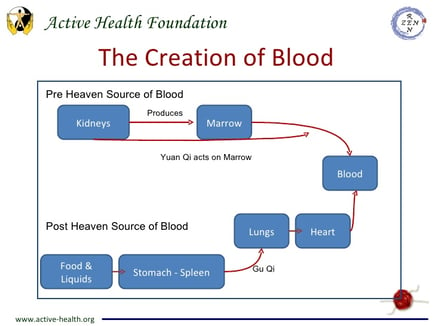
An advanced chart showing the sources of blood as produced in the Zang-fu organs.
The stomach and the spleen are essential organs in the production of blood and its healthy functions. Circulation is a prime function of Xue. When Blood is undersupplied, issues with anxiety, sleep deprivation, and irritability may surface.
Jin Ye: Jin Ye is a compound word that is translated as body fluids. Jin refers to thin, clear, and water-like fluids that nourish the skin and muscles, like teardrops and sweat.
Ye refers to thick viscous liquids that lubricate organs, like the brain and spinal cord fluid. Jin Ye is yin in nature and is produced through consuming food and drinks, where it then separates and distributes the nutrition throughout the body.
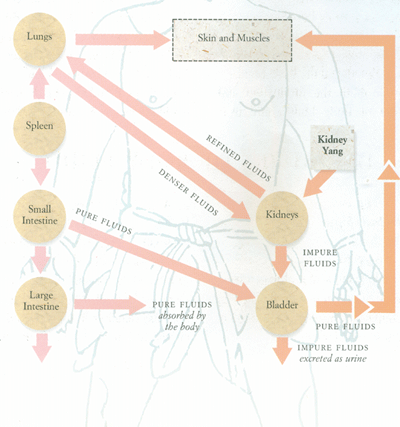
An anatomical flow-chart showing how Jin ye functions
In the upcoming weeks, we will discuss each of the five fundamental substances with greater details. For now, the important concept to keep in mind is that the substances are all interconnected and need to remain balanced to stay healthy. As we better describe these particulars, the big picture of health and healing in Traditional Chinese Medicine will become clear.
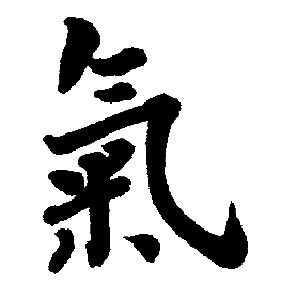
No comments:
Post a Comment